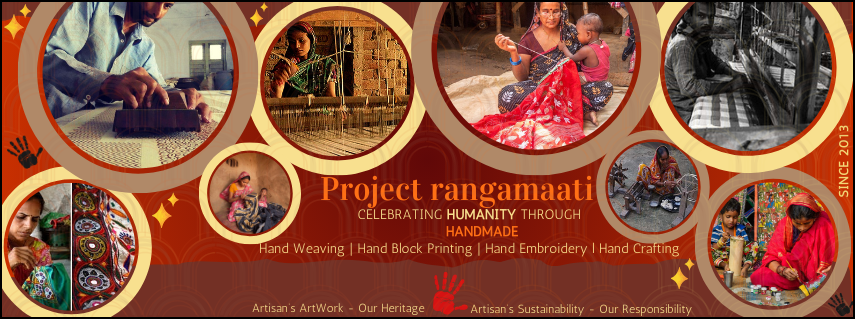Discover Unique Handloom & Handicrafts of INDIA all along Empowering the Artisans !

Ajrakh Art
Celebrating 1000 years of Generation based Traditional Craftsmanship
Halim Khatri - Ajrakh Artisan
Halim Khatri is a passionate Ajrakh Artisan from Dhamadka, Gujarat, dedicated to preserving this ancient craft of Hand Block Printing. With years of Experience, Halim has mastered the intricate techniques that define Ajrakh, a traditional form of block printing. His commitment not only to the Art but also to the Community has allowed him to teach younger generations the skills required to continue this Vibrant cultural tradition.
Through Workshops and Exhibitions, he shares his Knowledge and Expertise, ensuring that the beauty of ajrakh remains alive for many more years to come. Each of his creations tells a story, reflecting the heritage and history of the region, and is crafted with meticulous attention to detail and the highest quality materials.
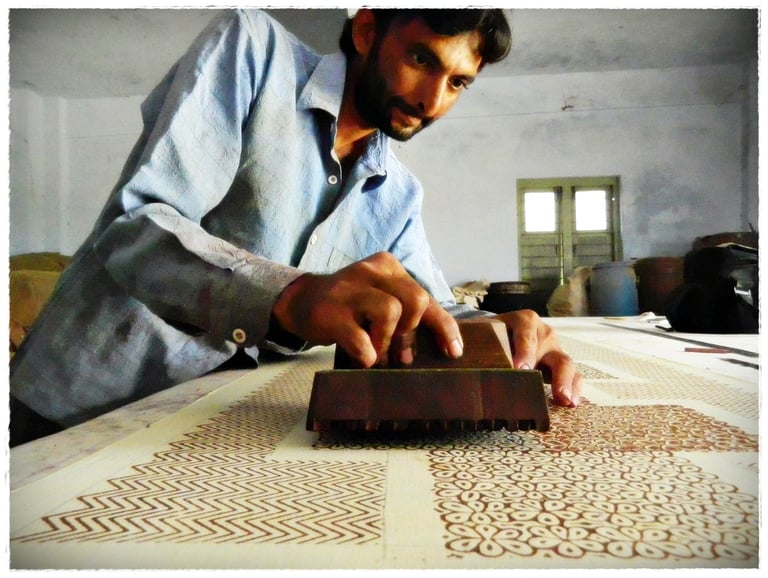

An Authentic Craftsperson in his Field.
Dr. Aditi Gopalakrishnan - Craft Connoisseur.
"
DHAMADKA ,GUJARAT
"
AJRAKH FUN FACT CHECK :
Ajrakh Artisans from “Khatri Community” were known to taste the red dye to judge its quality—much like a chef testing a dish—gauging the Alum content by instinct. In the absence of measuring tools, generations of practice honed their senses to achieve perfect proportions. Their refined judgment, guided by experience and intuition, became the true instrument of precision in this ancient block printing Craft which was always printed on both side of the Fabric and traditionally worn by both; the members of the Royal Court and the Pastoral Maldhari & Rabari Communities. Always handcrafted in vibrant hues so that the cattle herders could identify with each other even at a distance in the unforgiving desert landscape.
Ajrakh for me represents a cherished memory of my brothers, and growing up around handblock printing our regional traditions and staying connected to our identities.

Daastan-e-Ajarakh
Ajrakh is a refined block printing technique that layers intricate patterns to achieve striking Visual Effects. The harmonious interplay of natural dyes and hand-carved wooden blocks brings to life motifs inspired by nature, such as starry nights and the changing seasons. Originating in Sindh (now Pakistan), this craft later flourished in the Kutch region of India, and remains one of the oldest and most enduring printing methods today.
The true value of Ajrakh lies in its deep-rooted origins, the meticulous process of its creation, and its vibrant palette of Natural Colors, including INDIGO and MADDER. Each Ajrakh piece embodies the Artistry, Cultural Heritage, and Craftsmanship of its makers, making it a cherished and timeless art form both in India and across the World.
Azrak AJRAKH A-jharat
A Complete Guide To Ajrakh And The Process Of Ajrakh Making
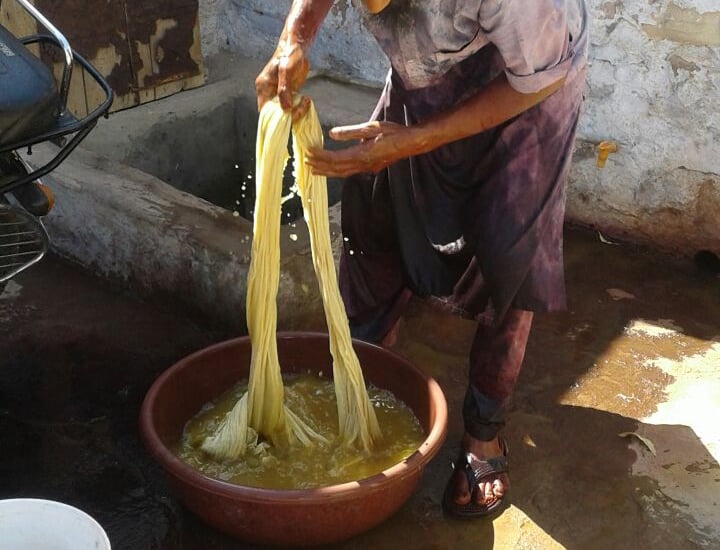

Preparation and Initial Treatments
Saaj : The fabric is washed in a solution of camel dung, soda ash, and castor oil, which removes starch and other finishes. This is repeated multiple times until the fabric foams when rubbed, followed by a final wash in plain water.
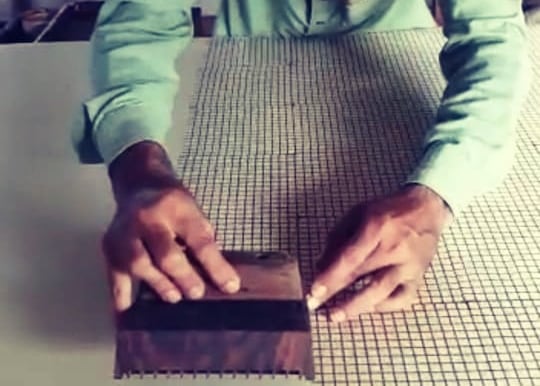

Resist Printing and Dyeing
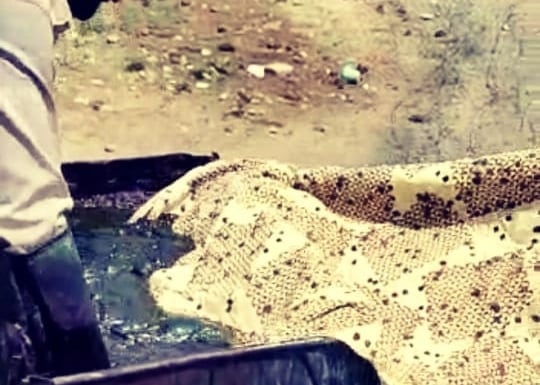



Dyeing & Layering
Indigo Dyeing : The fabric is then dipped into an indigo dye bath, often followed by sun-drying.
Final Stages
Final Washing: After all printing and dyeing stages are complete, the fabric is washed in a river or by hand to remove any remaining excess dye and paste.
→
→
→
→
Kasano : The fabric is then washed and mordanted in a solution of myrobalan (a natural dye and fixative) and dried.
Khariyanu: A resist paste, often made of lime and gum arabic, is applied with a carved wooden block to outline the white areas of the design..
Kat : A second resist paste, made from ferrous water (created from jaggery and iron scraps) and tamarind powder, is printed to create black
Repeat Resist Printing & Dyeing : The process of printing resist and dyeing is repeated several times. After each dye bath, the fabric is washed to remove the resist paste from the previously printed sections, which can then be printed with a different color.
Dyeing & Washing : The fabric is dyed in different colored baths (like madder for red) and then boiled. After boiling, it is washed again to set the color.
Drying : The final fabric is dried in the sun, sometimes folded while damp to create a final press.
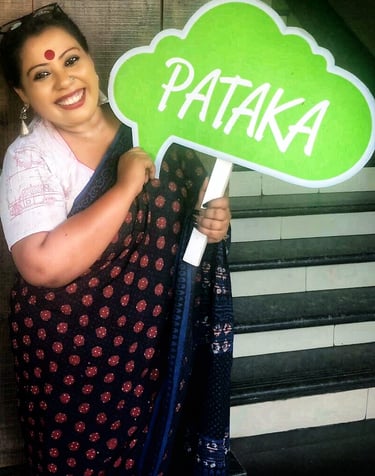

”Designs are unique and traditionally authentic,Genuine Natural herbs and minerals used one could vouch for from the organic smell,Saree is so soft and breathable ,I gladly recomend this site for online reliable Ajrakh purchases.”
- Sona Roy, Mumbai. India.
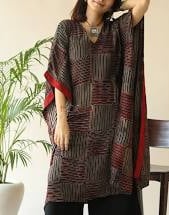



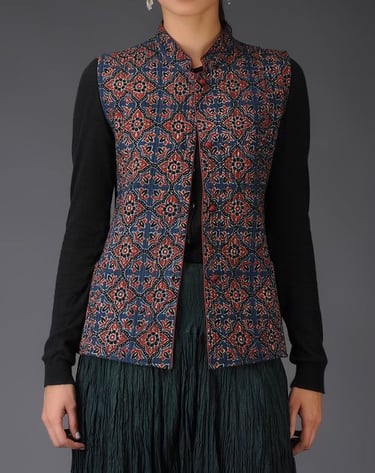

”Unique, affordable Kaftans. My first stop to buy handloom and hand block printed saris & dresses , as because i know the weavers and block printers get a fair deal.Loved the intricate prints in Natural Dyes by the Artisan .”
- Suchismita Ray, Hyderabad,India.
”Impressed with the Quality of handprinted motiffs,very different from my other previous ajrakh purchases,Shirt size fit is real good ,loved the handcrafted wooden buttons instead of plastic buttons.”
- Moloy Biswas, Kolkata , India.
”Loved the Prints ,Indigo and Madder dye contrast and the cut & make of the waist coat.Impressed with the efficiency and professionalism. The entire process was smooth and hassle-free.”
- Chandrika Sahaney, Bengaluru, India.
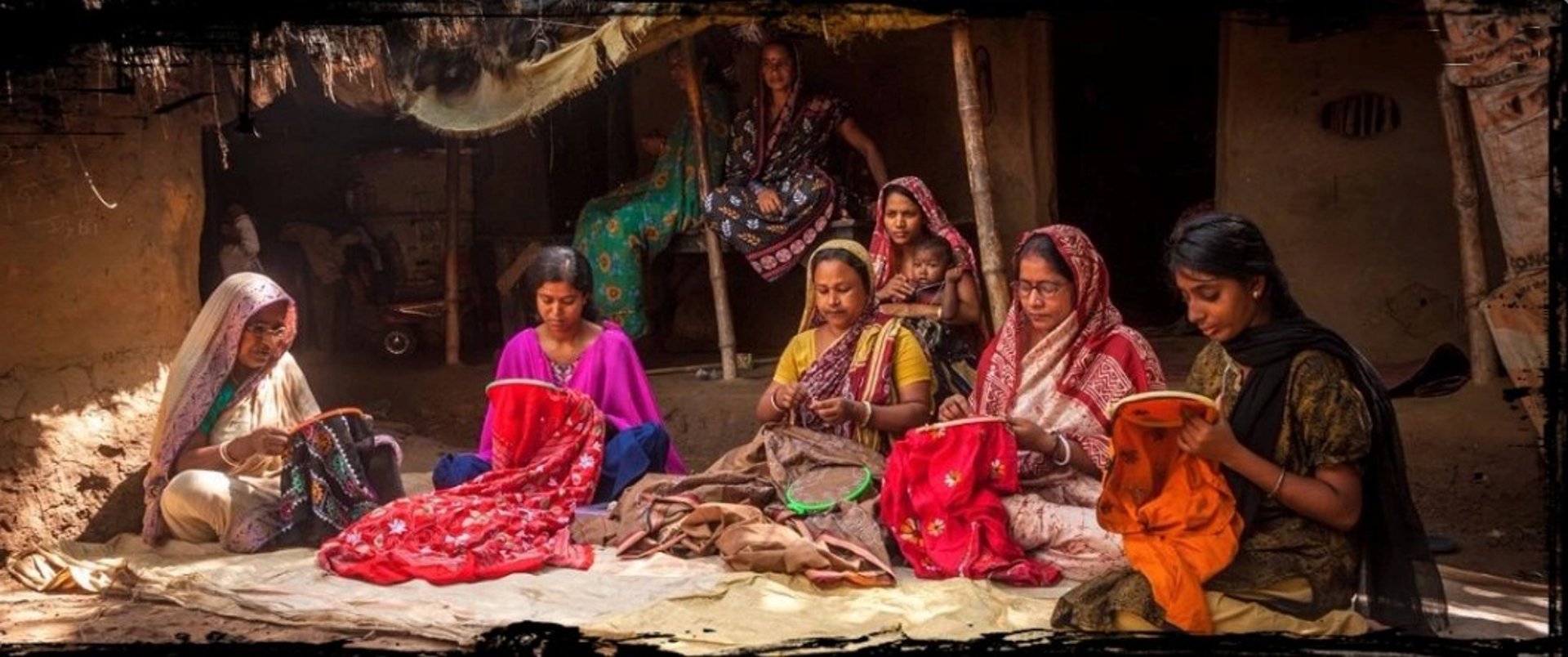
Project rangamaati
Helps YOU connect with Slow Sustainable Fashion over Mass-Production to SAVE Natural Resources, Raw Material and reduce Wastage and impulsive Consumption.
Established in 2013 in Kolkata, West Bengal, Project Rangamaati is a leading online craft store in India, Operating under a fully integrated inventory model. This approach ensures that all products are carefully handled and shipped directly from our Central Hub, reflecting our unwavering commitment to Authenticity and Quality. Project Rangamaati stands as a trusted authority in Traditional Indian Crafts, offering Customers an Authentic connection to India’s rich Artisanal Heritage.
Subscribe to our newsletter
sanjayg@rangamaati.com
+91-9804-219-546
© 2025. All rights reserved | Project rangamaati.
Support our Crowdfunding
May We Help You
Track Your Order
Terms & Conditions
Bulk Orders.
Quick Links
Organisation
projectrangamaati@gmail.com
Got a Question? Call


Love to hear from You
Our B2C Partners
Men's Collection
Flourish
Nymi
IndyMandy
WE SUPPORT SILK, HANDLOOM & HANDICRAFTS PRODUCTS ALL ALONG PRACTISING FAIR TRADE AT A FAIR PRICE.


Press & Media
